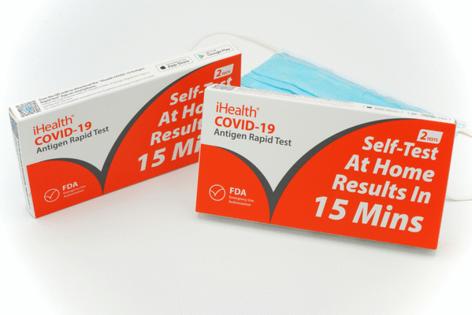Some Americans need more than one COVID booster this season, CDC says
Published in Health & Fitness
Cold and flu season is upon us, and with it comes a new round of COVID-19 booster shots.
The new 2024-2025 shots were recommended by the Centers for Disease Control and Prevention in June, approved and authorized by the Food and Drug Administration in August and rolled out to doctors offices and pharmacies in September.
Expecting an increase in COVID-19 cases ahead of the holidays, the last week of September the Biden administration relaunched the free at-home COVID-19 test kits, which are available online at the Department of Health and Human Services website.
Now, months after the shot became available, the CDC has updated the booster recommendations for older adults and those with preexisting conditions, the agency announced in an Oct. 23 news release.
Here is what you need to know.
Have COVID booster recommendations changed?
For most Americans, the CDC recommendations released earlier in the fall have not changed.
Everyone over the age of six months should receive one dose of the 2024-2025 booster shot, the CDC says. This includes anyone who has had COVID-19 shots in the past or those who have never gotten a shot.
Children between the ages of 6 months and 4 years who have not been vaccinated are considered up to date once they have received a full course of the Pfizer vaccines (three shots) or the full course of Moderna vaccines (two shots), the CDC says.
Kids between the ages of 5 and 11 years are up to date once they have received the 2024-2025 booster from either Moderna or Pfizer-BioNTech.
The same is true for anyone over the age of 12 if they previously received a vaccine. There is an exception for those choosing to receive a Novavax vaccine, according to the CDC. If you are getting a shot for the first time, you need two Novavax vaccines to be considered up to date.
Recommendations have been updated for those over the age of 65 or with moderate or severe preexisting conditions, the CDC says.
If you belong to one of these groups, the Advisory Committee on Immunization Practices now recommends getting a 2024-2025 booster at the beginning of the season and then another one in six months, according to the CDC.
If you received your booster in September, when it was first available, then you would be eligible for another booster in March, potentially before spring recommendations are released.
“The recommendation acknowledges the increased risk of severe disease from COVID-19 in older adults and those who are immunocompromised, along with the currently available data on vaccine effectiveness and year-round circulation of COVID-19,” the agency says.
Studies show COVID-19 spikes on a biannual cycle, with two seasonal peaks, compared to other respiratory illnesses like influenza that have one seasonal peak.
“The recommendation also provides clarity to health care providers on how many doses should be given per year to people who are moderately or severely immunocompromised and is meant to increase coverage of this second dose for that group,” the CDC says.
What COVID variants are circulating right now?
The COVID-19 variant KP.3, from the group of variants called FLiRT variants, accounts for nearly 60% of all new cases in the United States as of Oct. 29, according to CDC tracking data.
A new variant XEC, however, is picking up speed as we head into the winter season, now accounting for 17% of cases as of Oct. 29, the data shows.
Health experts warn that XEC could become the dominant strain quickly in the U.S. as it appears to be highly transmissible, according to Yale Medicine.
The strain is a subvariant of omicron, like the FLiRT variants, and first appeared in Germany in June before rapidly spreading across Europe and to the United States, according to Yale.
But unlike the FLiRT subvariants, XEC is what is called a “recombinant strain,” meaning a hybrid between two pre-existing subvariants that merged together into one infection. This means it has the potential to more quickly mutate into something more severe.
“So, instead of this slow marching along — one mutation at a time — that we’ve been seeing with the SARS-CoV-2 variants, this has the potential to create a big jump, because it combines full segments of two genomes into one new genome,” Scott Roberts, an infectious disease specialist, told Yale Medicine.
Symptoms of XEC are so far the same as previous omicron variants and are milder than previous strains. According to the CDC, these include a cough, congestion, runny nose, diarrhea, fever or chills, shortness of breath, and loss of taste or smell.
If you believe you may have COVID-19, the CDC recommends isolating at home until your fever has subsided without the help of medication and your symptoms are improving overall.
_____
©2024 Fort Worth Star-Telegram. Visit star-telegram.com. Distributed by Tribune Content Agency, LLC.










Comments